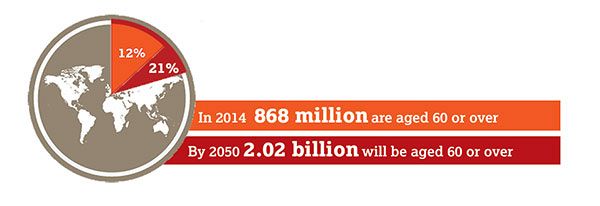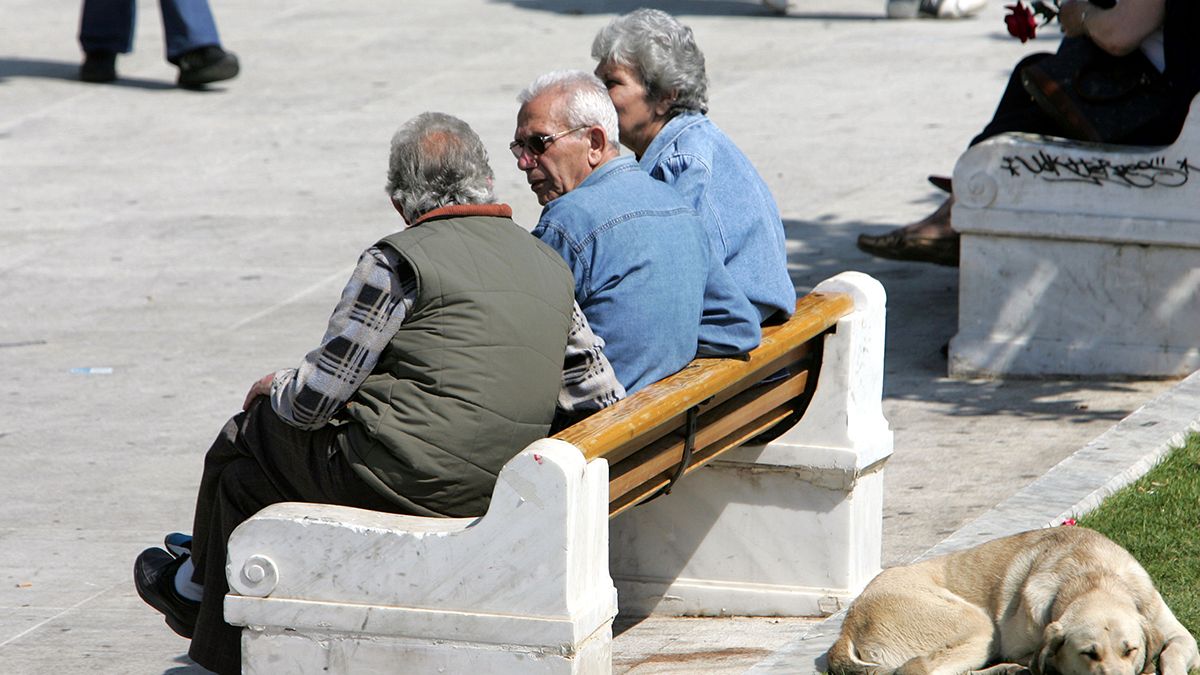TOP 20 PLACES TO AGE
Country ranking according to Global AgeWatch Index. See below for a full Europe list.
- Norway 93.4
- Sweden 88.3
- Switzerland 87.9
- Canada 87.5
- Germany 86.3
- Netherlands 86.0
- Iceland 85.3
- United States 83.5
- Japan 82.6
- New Zealand 80.7
- United Kingdom 80.1
- Denmark 77.6
- Australia 76.1
- Austria 76.0
- Finland 75.8
- France 74.8
- Ireland 74.2
- Israel 72.2
- Luxembourg 71.3
- Estonia 67.7
Europe is the best continent to grow old in the world, according to a new global index released today (Wednesday, October 1).
Norway, Sweden and Switzerland make up the first three in the rankings, while Europe boasts 70% of the countries in the top 20.
The figures, published as part of HelpAge International's Global AgeWatch Index, measure four key areas: income security, health, personal capability and whether the person lives in an ‘enabling environment’.
The data – compiled to coincide with the UN International Day of Older Persons – reveals a striking disparity between northern and southern Europe.
All the European countries in the top 20 are in the northern half of the continent.
Spain (21st) is the highest southern country, while Greece is down in 73rd, behind India, Nepal and Bangladesh.
The HelpAge report pins part of the blame on government austerity programmes: “A comparison of Norway (1) and Portugal (37) highlights the difference that strong civil society and government support makes. While older people in Norway benefit from well-resourced older people’s associations, public recognition of ageing issues through the media and a long tradition of state welfare, older people in Portugal have borne the brunt of government austerity measures over the past four years.”
It adds there is a strong link between the top performing countries and the Human Development Index, a global measure of life expectancy, education, and income.
The report continues: “Exceptions are Greece (73) and Italy (39), which have lower pension
income coverage, employment and educational attainment rates, and enabling environment rankings than might be expected.
“Older people’s welfare has been affected by government austerity programmes in recent
years, affecting health services, and in the case of Greece, pensions.”
AGEING POPULATION

HOW EUROPE WILL AGE BY 2050
This shows the percentage of the population over 60 in 2014, and in brackets, by 2050.
- Germany 27.5 (39.6)
- Italy 27.4 (38.7)
- Finland 26.8 (31.5)
- Greece 26.0 (37.9)
- Croatia 25.6 (36.0)
- Sweden 25.6 (28.5)
- Portugal 25.1 (40.8)
- France 24.5 (31.0)
- Denmark 24.4 (28.5)
- Latvia 24.4 (30.4)
- Estonia 24.4 (32.5)
- Slovenia 24.4 (37.1)
- Belgium 24.3 (31.8)
- Hungary 24.3 (32.7)
- Malta 24.1 (36.8)
- Austria 24.0 (33.5)
- Netherlands 23.8 (32.9)
- Switzerland 23.6 (30.4)
- Spain 23.4 (40.2)
- UK 23.3 (30.7)
- Norway 21.8 (28.1)
- Luxembourg 19.5 (29.1)
- Iceland 18.3 (29.8)
- Ireland 17.2 (29.7)
The report also sheds light on what it calls ‘unprecedented demographic change’ – an ageing population.
It says the world’s over-60s will rise to two billion by 2050, from 868 million now.
In the European Union over-65s accounted for 18.2% of the population in 2013 – that’s forecast to leap to 28.7 by 2080, according to Eurostat.
The percentage of over-60s in Spain is forecast to jump (see table, right) from 23.4 percent to 40.2 percent, according to the AgeWatch Index report, a climb of 71 percent. Only Portugal is expected to have a bigger proportion of pensioners – 40.8% by 2050, up from 25.1 now.
Scandinavian countries, notably Finland and Sweden, are set for more modest increases, up 17% and 11% respectively.
AGEING POPULATIONS – THE IMPLICATIONS
Economists from the World Bank Group met to discuss the impact of Europe's ageing populations.
They suggest implications for economic growth – because of changes to the supply and productivity of labour.
They also believe there will be more demand on public services, such as healthcare.
In their conclusions they wrote: “The primary macroeconomic implication of ageing is a shrinking supply of labour resulting from a declining working-age population. The structure of working age populations will change as well, with potential implications for labour productivity due to loss of dynamism and less job reallocation across occupations, sectors and locations. This has significant implications for economic growth – which depends on the supply and productivity of labour.
“Furthermore, ageing populations tend to save less, what can have negative consequences for investment and capital accumulation and thus further slowdown economic growth.
“Population ageing will increase demand pressures on public services, most importantly the provision of healthcare and long term care. Finally, increasing expenditure on pensions and healthcare will affect long term sustainability of public finances.”
GROWING OLD IN EUROPE – FULL TABLE
This shows how countries in Europe compared in an index assessing the best places to grow old. We’ve added Russia as part of it lies in Europe.

